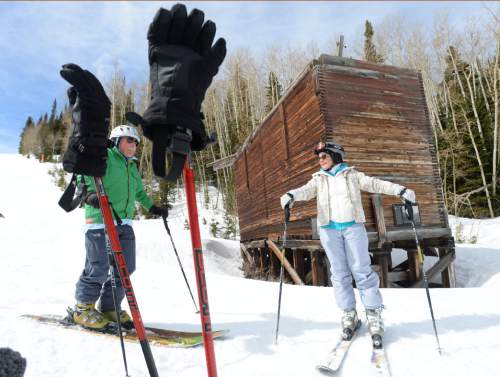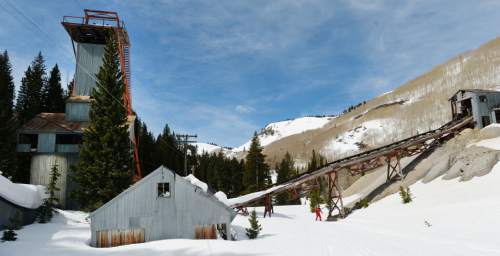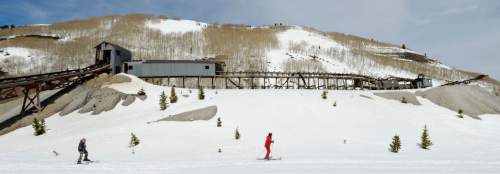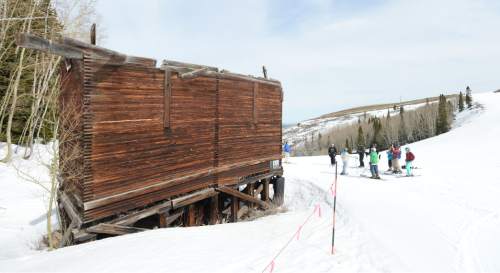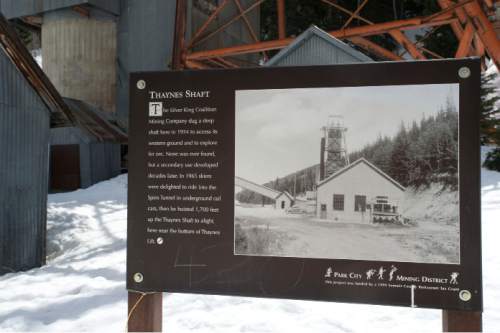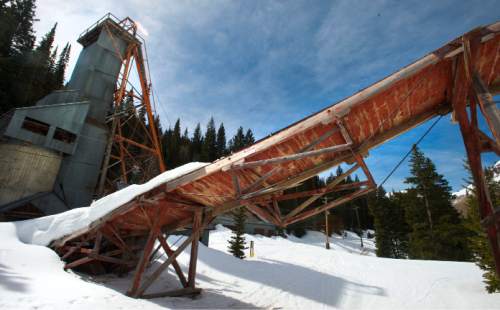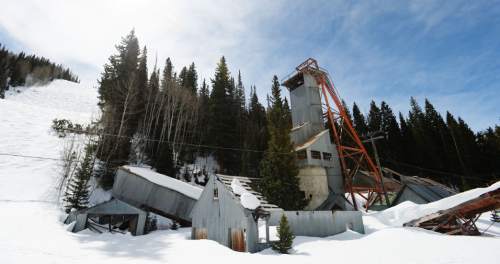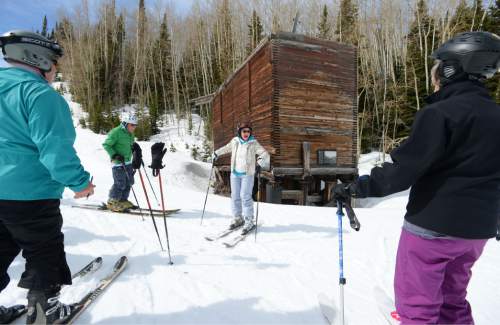This is an archived article that was published on sltrib.com in 2016, and information in the article may be outdated. It is provided only for personal research purposes and may not be reprinted.
Park City • Mining begat Park City, so local conservationists are teaming up to preserve that heritage by stabilizing seven time-worn mining structures along Park City Resort's ski slopes.
"These structures represent the industrial backbone of the mining industry … a business that fueled this beautiful town we have," said Rory Murphy, one of three co-chairpersons of the newly formed Friends of Ski Mountain Mining History.
A year in the making, the organization announced its intent Friday to raise funds to stabilize the largely wooden structures — some more than a century old — scattered along the fringes of the United Park City Mines' lands that became the country's biggest ski area under Vail Resort Inc.
How much money must be raised has not been determined.
It all depends, said Clark Martinez, a fourth generation Park City miner who will lead the stabilization effort, on what he finds as he cleans up each site and can better assess how bad or good each is.
"I'll go see what it takes to do it and then I'll do it," said Martinez, whose three-man operation, The Xcavation Co., has done considerable work for the state's abandoned-mine-reclamation program.
The ski resort is kicking in $50,000 to launch the effort.
"These historic mining structures are important to us," said Bill Rock, Park City Resort's chief operating officer, at a news conference at the Legacy Lodge. "They give our guests a glimpse into Park City's past, something they'll see nowhere else in the world."
Park City government officials have been involved in pulling the group together and helping to identify the structures of importance.
City Planning Director Bruce Erickson said the goal is more than to merely "keep old things." What the Friends of Ski Mountain Mining History hopes to accomplish will be important, he added, "to how we tell our story to the future."
The first structure targeted for sprucing up is what remains of the California-Comstock Mine, formed from the merger of two mines in 1903.
It's in rough shape. Three stories tall, its frame appears pretty much intact, but some of its timbers are leaning and there's all sorts of debris on the ground. A loading bin that used to be attached to the frame has fallen off and is lying pretty intact off to the side.
"I'm surprised it's still standing up, with some of the winds last winter," Martinez observed, adding with sadness that a similar structure at the old Daly-West Mine had been toppled by a gale.
"It's still laying on its side," he said. "It broke my heart. Pretty soon they're all going to fall over if they don't do something about it."
The other two co-chairpersons of Friends clearly are not going to let that happen.
Park City Historical Society Executive Director Sandra Morrison and former Summit County Councilwoman Sally Elliott exuded enthusiasm for the effort and a wealth of information about the roles each structure played in making Park City a boom town.
"This is just an iconic part of Park City's history," said Elliott, described by Park City Resort's Rock as the "conscience" of the project, relentlessly pushing it forward.
Elliott, in turn, praised Vail for "getting it so much," it being the value of preserving the past to inform the future. "Thanks for coming to town with your vision intact, [being] willing to shell out money and give us access to the mountain."
Because United Park City Mines started the ski resort, Morrison said it was appropriate that a successor ski resort such as Vail should help provide a window into that mining past. By preserving these structures, she added, "visitors can see there were people here 100 years ago and we're here, as a community, dedicated to keeping our past alive."



